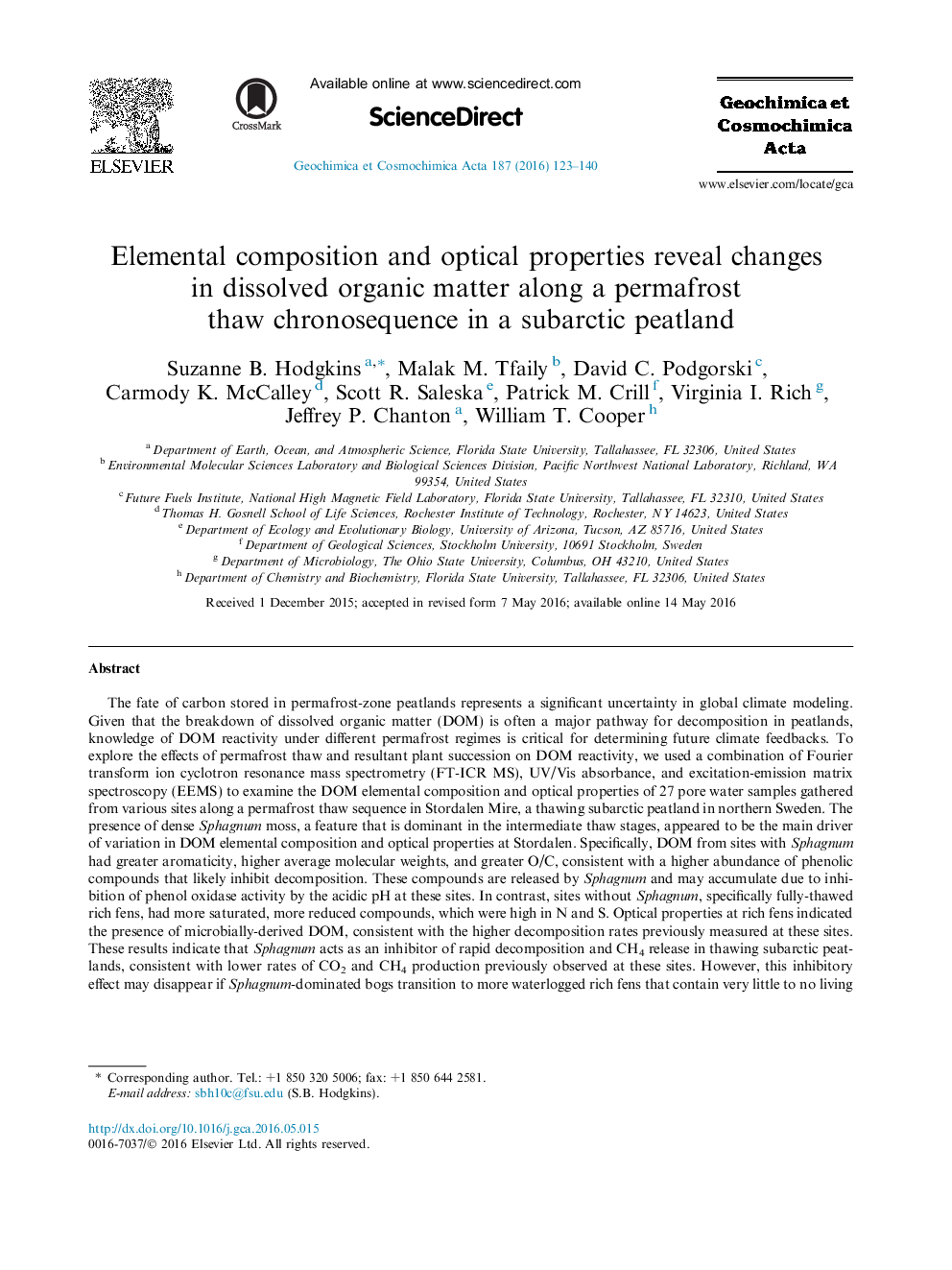| کد مقاله | کد نشریه | سال انتشار | مقاله انگلیسی | نسخه تمام متن |
|---|---|---|---|---|
| 6437317 | 1637970 | 2016 | 18 صفحه PDF | دانلود رایگان |
The fate of carbon stored in permafrost-zone peatlands represents a significant uncertainty in global climate modeling. Given that the breakdown of dissolved organic matter (DOM) is often a major pathway for decomposition in peatlands, knowledge of DOM reactivity under different permafrost regimes is critical for determining future climate feedbacks. To explore the effects of permafrost thaw and resultant plant succession on DOM reactivity, we used a combination of Fourier transform ion cyclotron resonance mass spectrometry (FT-ICR MS), UV/Vis absorbance, and excitation-emission matrix spectroscopy (EEMS) to examine the DOM elemental composition and optical properties of 27 pore water samples gathered from various sites along a permafrost thaw sequence in Stordalen Mire, a thawing subarctic peatland in northern Sweden. The presence of dense Sphagnum moss, a feature that is dominant in the intermediate thaw stages, appeared to be the main driver of variation in DOM elemental composition and optical properties at Stordalen. Specifically, DOM from sites with Sphagnum had greater aromaticity, higher average molecular weights, and greater O/C, consistent with a higher abundance of phenolic compounds that likely inhibit decomposition. These compounds are released by Sphagnum and may accumulate due to inhibition of phenol oxidase activity by the acidic pH at these sites. In contrast, sites without Sphagnum, specifically fully-thawed rich fens, had more saturated, more reduced compounds, which were high in N and S. Optical properties at rich fens indicated the presence of microbially-derived DOM, consistent with the higher decomposition rates previously measured at these sites. These results indicate that Sphagnum acts as an inhibitor of rapid decomposition and CH4 release in thawing subarctic peatlands, consistent with lower rates of CO2 and CH4 production previously observed at these sites. However, this inhibitory effect may disappear if Sphagnum-dominated bogs transition to more waterlogged rich fens that contain very little to no living Sphagnum. Release of this inhibition allows for higher levels of microbial activity and potentially greater CH4 release, as has been observed in these fen sites.
Journal: Geochimica et Cosmochimica Acta - Volume 187, 15 August 2016, Pages 123-140
